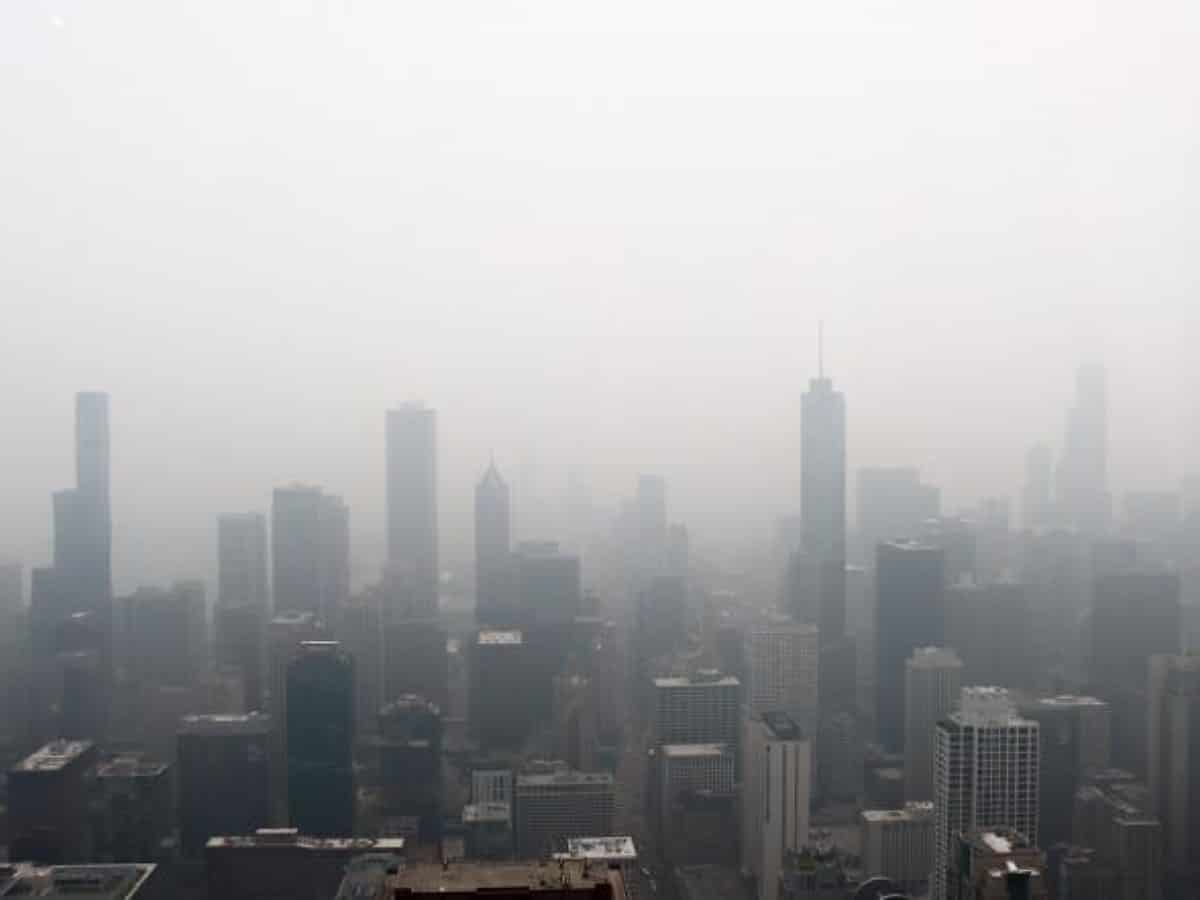
Chicago: Smoke drifting from the raging wildfires in Canada has caused the air quality level in Chicago to rank among the worst in the world.
As of 4 p.m.on Tuesday, AirNow.gov listed Chicago’s air quality at 258, under the “very unhealthy” category, reports Xinhua news agency.
The Illinois Environmental Protection Agency issued an air quality alert in effect until midnight Wednesday and encouraged Chicago residents to limit their time outdoors.
Air Quality Alerts were also in effect for the states of Wisconsin and Indiana.
The Chicago Park District has moved programs, including summer camps, indoors, while all beaches in Evanston have been closed, local media reported .
AirNow.gov recommends people who must be outside wear an N95 mask and those with heart or lung disease, older adults, children and teens to reduce exposure.
Mayor Brandon Johnson stated the air quality, saying the City of Chicago is carefully monitoring and taking precautions.
The US Environmental Protection Agency has categorised Chicago’s Air Quality Index as “unhealthy” due to Canadian wildfire smoke .
“We recommend children, teens, seniors, people with heart or lung disease, and individuals who are pregnant avoid strenuous activities and limit their time outdoors,” Brandon said in the statement.
“Anyone who needs immediate medical attention should dial 911,” the statement added.
Detroit had the second-worst air quality in the world Tuesday.
The National Weather Service issued poor air quality alerts for northeastern Illinois, northwestern Indiana and all of southeast Michigan for Tuesday and Wednesday.
Emissions from about 400 wildfires burning in Canada cast an orange haze earlier this month, including New York City, Boston, Philadelphia and Washington, D.C.
Canada’s wildfire season this year is the worst on record, with around 29,000 square miles burning in eastern and western Canada, which is greater than the combined area that burned in 2016, 2019, 2020 and 2022.



